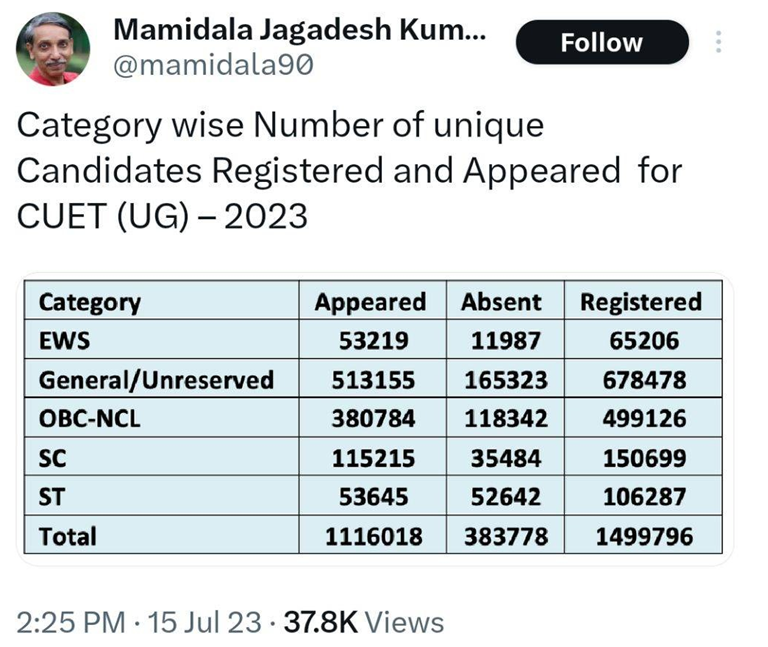Huge Number of Marginalised Students Skip CUET UG

Universitiesand colleges will soon release merit lists based on cut-off marks after the Common University Entrance Test Undergraduate (CUET UG)resultswere declaredon Saturday.
After the delay in admissions caused due to the lockdown, Central universities are again set to sync up the different semester cycles and restore the order of a regular academic calendar.
While most students who took the exam hope for admission to esteemed universities and colleges, one-fourth of them couldn’t appear for it. The absenteeism ratehas been high with 40% in the first exam and 25% this year.
Since the introduction of CUET last year, students have questioned how it is conducted and its utility. The earlier admission process, based on 10+2 percentage or cut-off marks in UG for PG admission was scrapped and the common national entrance test, was introduced for admission to most Central and a few state universities.
Many students, professors, intellectuals and activists had already feared how the exam will further reduce the inaccessibility of students from marginalised sections to premier educational institutesas they wouldn’t be able to afford coaching centres offering classes to crack the test.
Moreover, CUET would turninto an assessment like the NEET or JEE that have little to do with academic aptitude, they had said.
Data from this year’s CUET UG clearly show how the fears have come true with many students from marginalised communities not taking the exam despite registering.
On July 15, UGC chairman MJ Kumar tweeted the data for category-wise registration of candidates and the total number of those who appeared for the exam.

One-fourth of the students who had registered for the exam didn’t appear, including 25% of SC students and around 50% of ST students. The highest number of students who took the exam were from the EWS category at 81% followed by 75% from the unreserved category.
Key Takeaways:
- Administrative incompetence: Just like last year, a lot of students complained about the delay in issuing admit cards and allotting exam centres in far-off and isolated places not easily accessibleto everyone. Thousands of students from marginalised and financially weaker sections skipped the exam with many failing to make travel arrangements due to the delay.
A student from Haryana told Newsclick that he skipped the exam because his centre was third on his priority list. He had chosen Meerut, UP, since he had no option
Even several students in Delhi couldn’t appear in the exam as their centres were located in places without Metro or bus connectivity, and they couldn’t afford Rs600-Rs 800 each way.
- Computer-based exam model: Delhi University (DU)-associated Miranda Houseprofessor Abha Dev Habibtold The Telegraph that many poor and rural students didn’t take the exam because they weren’t acquainted with using computers. “This may have discouraged many from taking the test. To provide a level playing field, pen-and-paper tests should be held,” she said.
Students from socially and financially advantageous sections have desktops at home to practise for the exam and clearly had the upper hand.The computer-basedmodel highlighted the class and urban-rural divide.
- Highest number of Students from EWS: The low number of absentees in the EWS category raises questions about eligibility criteria. SFI activist and DU alumnus Pritish Menon said, “If the eligible students in this category really suffered socially and economically, the percentage of absenteeism should have been similar to other reserved categories.”
He demanded scrapping this category or devising a more sensible criterion. “Really poor and economically backward sections should benefit from this reservation,” he told Newsclick.
Get the latest reports & analysis with people's perspective on Protests, movements & deep analytical videos, discussions of the current affairs in your Telegram app. Subscribe to NewsClick's Telegram channel & get Real-Time updates on stories, as they get published on our website.
























